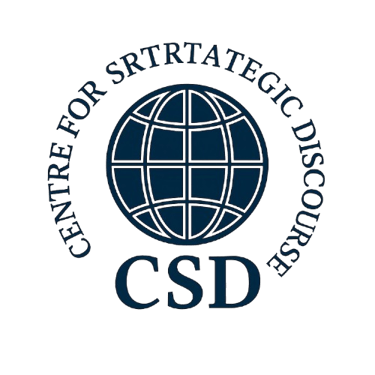Add your promotional text...
Tariff Turmoil: What Forced Trump to Hit Pause on His Trade War
This article explores the economic and political fallout that led former President Donald Trump to impose a 90-day pause on his sweeping tariffs, excluding those on China. Amid market turmoil, bond sell-offs, internal administration chaos, and mounting pressure from business leaders and Republican allies, Trump’s decision marks a rare retreat in his trade policy. The piece analyzes the key events, stakeholder reactions, and implications for U.S. economic strategy moving forward.
By the Centre for Strategic Discourse (CSD), Islamabad April 11, 2025
5/8/20243 min read
In a sharp reversal of his escalating trade war, former President Donald Trump announced a 90-day pause on new tariffs for all countries except China. The announcement came through a post on his Truth Social platform, catching many—including his top trade officials—by surprise. This abrupt shift reflects a moment of political and economic recalibration rather than a strategic maneuver, exposing the limitations of Trump’s tariff-centric approach and the pressure points of market-driven governance.
Markets React, and So Does Trump
Despite Trump's characteristic rhetoric—like insisting last week that “MY POLICIES WILL NEVER CHANGE”—financial markets told a different story. The sell-off in the U.S. Treasury bond market was especially alarming. Historically considered a safe haven in times of stock market volatility, the unexpected decline in Treasury bond demand signaled that foreign investors were losing confidence in the U.S. economy under Trump’s aggressive trade stance. Analysts noted that yields on long-term Treasurys rose instead of falling, a reversal of typical market behavior in times of uncertainty (CNN).
Treasury Secretary Scott Bessent, who reportedly had a key conversation with Trump before the pause was announced, had been tracking these trends closely. The unusually low demand at the latest Treasury auction further exacerbated concerns about the long-term fiscal implications of the administration’s trade policies (Reuters).
Internal Chaos and the Politics of Retreat
The timing of the announcement—during a Congressional hearing in which U.S. Trade Representative Jamieson Greer was defending the tariffs—underscored the chaotic and impulsive nature of the decision-making process. Lawmakers like Rep. Steven Horsford criticized the administration’s lack of coordination, highlighting how even senior officials were blindsided by the pause (Politico).
Meanwhile, Trump’s closest economic allies, including Commerce Secretary Howard Lutnick, tried to frame the retreat as part of a larger negotiation strategy. But Trump himself admitted the pause was largely reactive: “People were getting a little bit yippy, a little afraid,” he said, acknowledging that the financial pressure had mounted beyond what his team anticipated (CNN).
Pressure from the Business Community and GOP
The economic fallout was not just theoretical. JPMorgan Chase CEO Jamie Dimon, in a televised appearance on Fox Business, warned that a recession was “a likely outcome” of Trump’s aggressive trade war—remarks Trump reportedly saw and weighed heavily (Fox Business).
Phone calls from top executives and Republican leaders flooded into the White House, especially to Chief of Staff Susie Wiles and Vice President JD Vance, urging a reconsideration of the policy. Their argument: political capital was being burned at an unsustainable rate as markets nosedived and public panic spread. According to White House insiders, Wiles played a pivotal role in shifting Trump’s position by articulating the electoral cost of sticking to an unpopular trade agenda (Axios).
China Still in the Crosshairs
Notably, the 90-day pause excluded China, against which Trump announced an increase in tariffs to 125%. This escalation follows China's own retaliatory move, raising tariffs on American goods to a total of 84%. Trump's justification, posted online, blamed China’s “lack of respect” for global markets—a return to his familiar nationalist framing of trade conflicts (Bloomberg).
While White House press secretary Karoline Leavitt had stated just a day earlier that there were no plans for reversals, Trump's policy whiplash underscored the inconsistency and reactiveness of his administration’s trade agenda. Still, he projected optimism about eventual negotiations with China and others: “China wants to make a deal — they just don’t know quite how to go about it,” he said (CNN).
Analysis: Political Pain Threshold and Policy Limits
Trump’s decision to pause the tariffs is less a tactical masterstroke than a recognition of the political and economic cost of market instability. Despite claims that it was all part of the plan, his public remarks—filled with candid admissions of surprise and stress—tell a different story. The Treasury bond market, traditionally immune to such rapid selloffs, served as a barometer of confidence, and it was flashing red.
More broadly, the episode reveals the limits of tariff-based economic nationalism. While Trump’s base may support a tough-on-China stance, the indiscriminate tariff regime had begun to alienate both international partners and domestic stakeholders. The 90-day pause may buy the administration time to negotiate, but the damage to credibility and coordination within the White House is already apparent.
Conclusion
Trump’s tariff pause reflects the unavoidable tension between economic ideology and financial reality. Whether the next 90 days yield meaningful negotiations or more volatility remains to be seen. But one thing is clear: markets still matter, and when they push back, even the most defiant policymakers must sometimes blink.
Stay informed with our latest project news.
Connect
info@strategiccentre.org
© 2025. All rights reserved.
media@strategiccentre.org
Terms & Policy
Stay UPDATED
